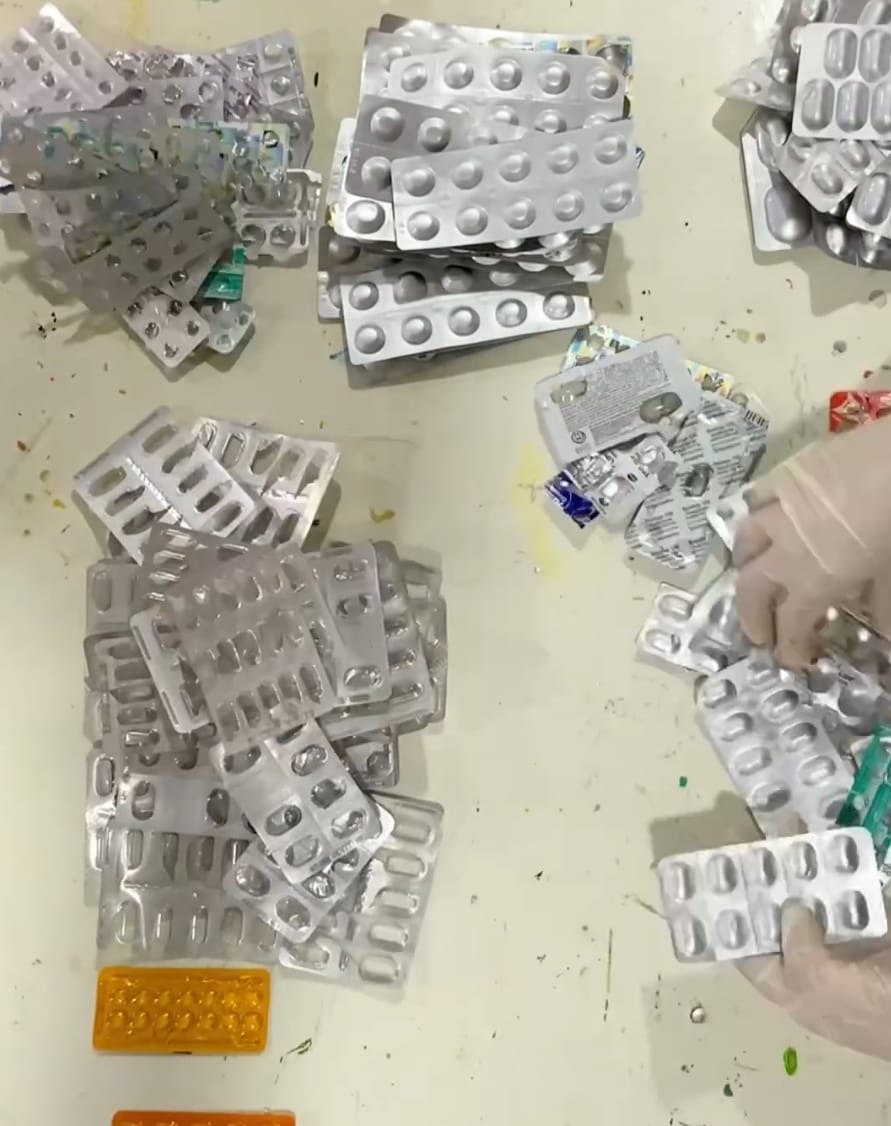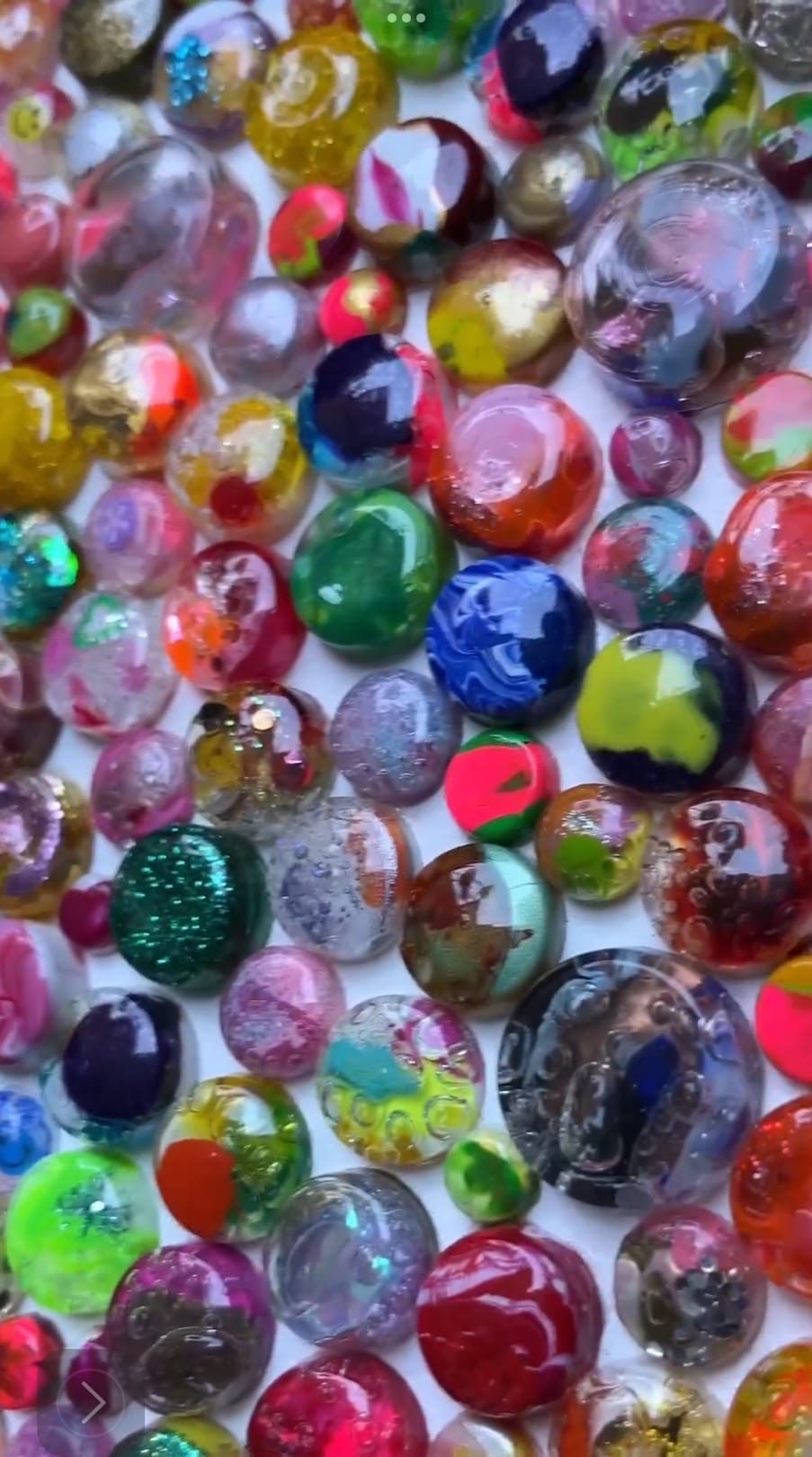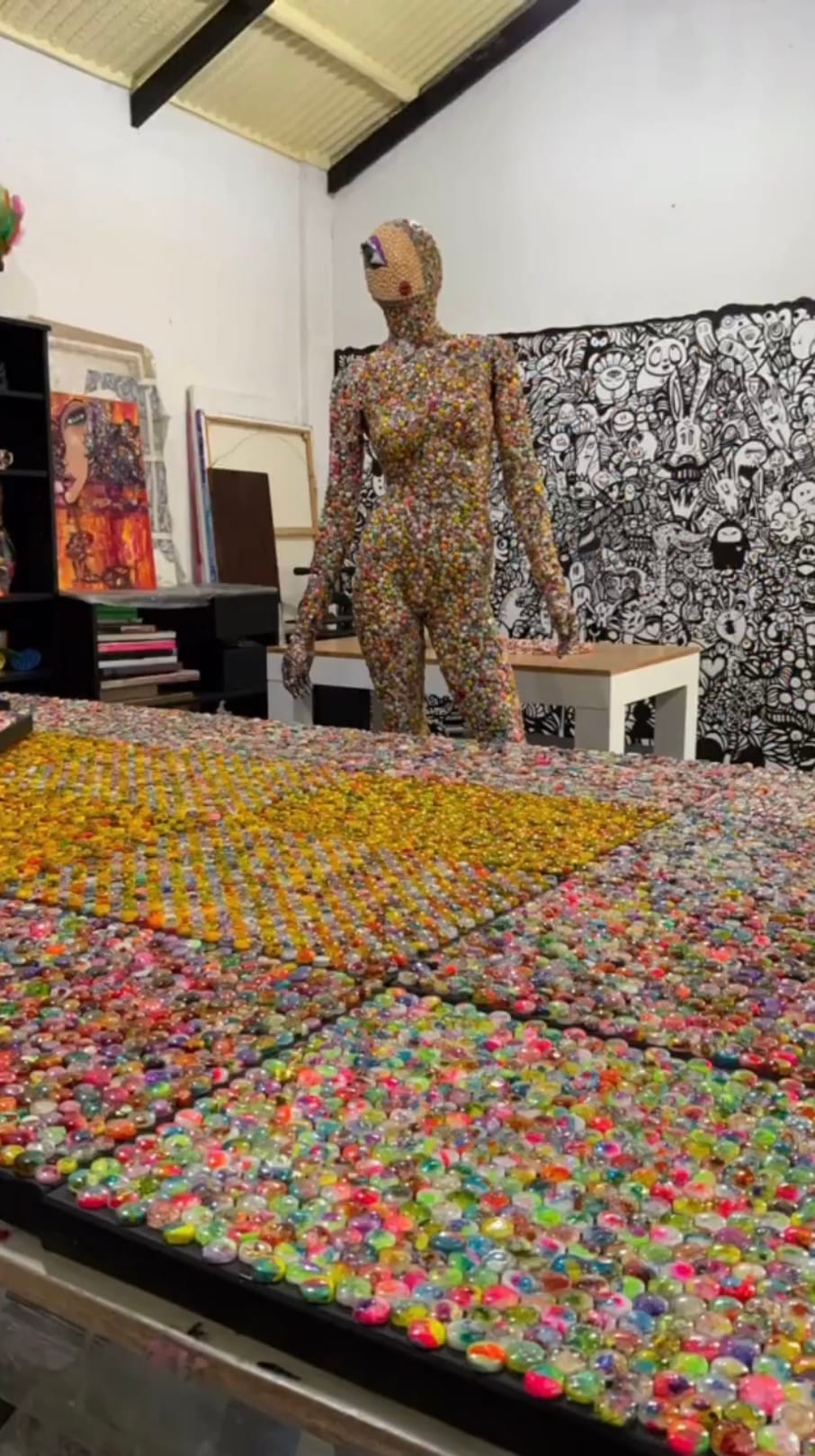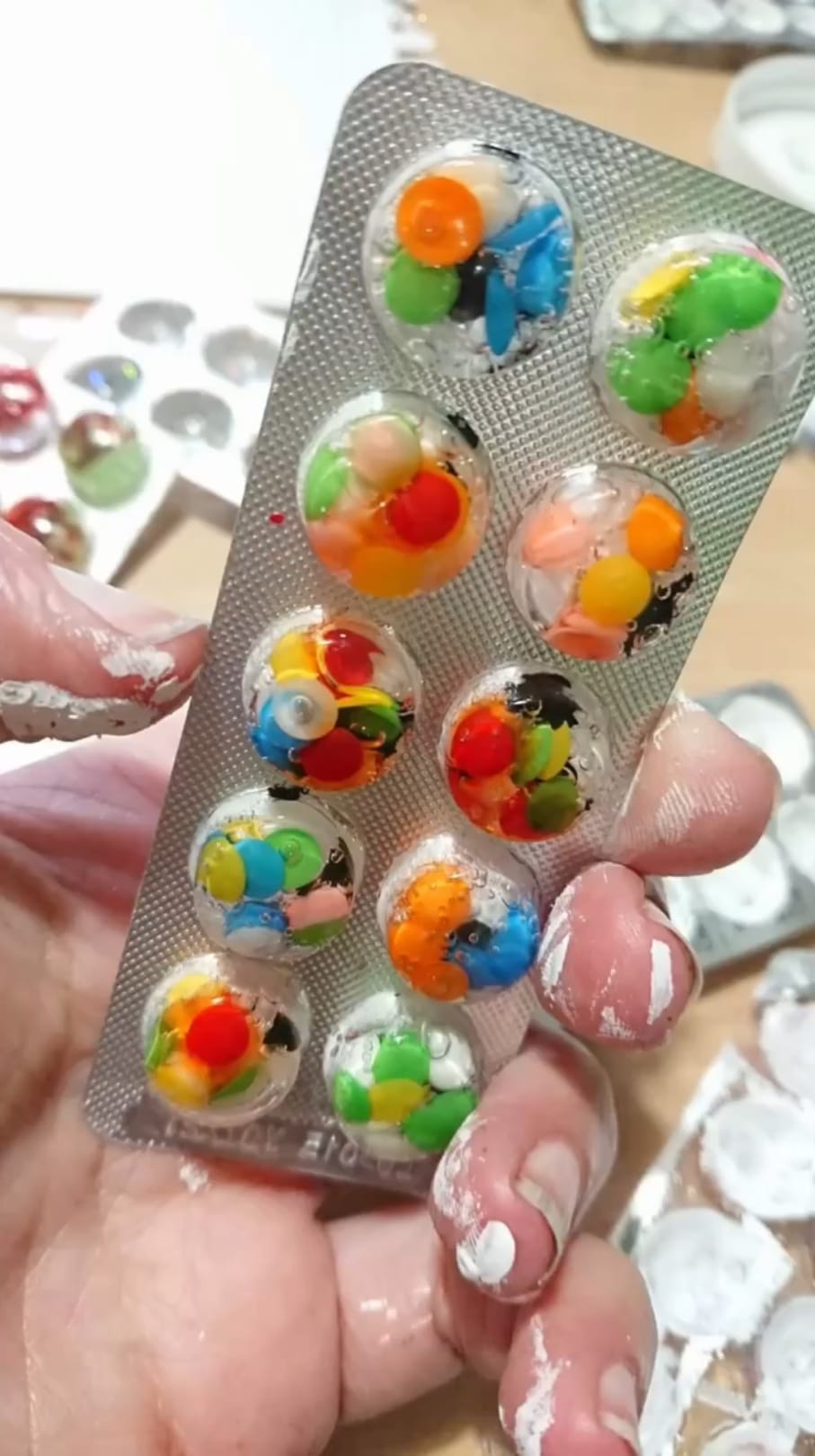Spanish artist AnyAlva casts colourful beads out of discarded medicine blisters, an original technique she dubs “blistereando.” She then uses them to create mosaic art that forms everything from flowers to a woman’s body. AnyAlva’s art showcases how reusing, reducing, and recycling can also mean creating something beautiful while making a difference for the environment, reflecting the United Nations Sustainable Development Goal of Responsible Consumption & Production.

AnyAlva begins her process by first sorting the discarded blisters she has collected. She piles them according to the different types of pills they used to host, which creates different moulds for equally different types of beads. After doing so, she manually peels off the aluminium foil seals that might inhibit her from using the individual plastic pill packets as moulds for her beads.
She then casts individual beads by using the medicine blisters that she has separated from their aluminium foil seals and cleaned. While the bead’s resin-like material hardens, AnyAlva inserts all sorts of materials into the beads to make them playful and colourful. She adds everything from paint to glitter and even colourful sprinkles, making the eco-friendly beads particularly eye-catching.

After the beads have cured and are popped out of their medicine blisters, AnyAlva arranges them into striking mosaics. She has covered everything from yards and yards of canvases to a whole mannequin, forming a feminine body that’s bursting with colourful buttons.
A 2023 paper published on Science Direct outlines how the use of blister packaging for pharmaceuticals has increased recently. As a result, they generate a significant amount of waste, which accounts for four per cent by weight of the total packaging waste generated worldwide in a day.

Aside from that, medicine blisters typically contain plastic and aluminium combined in thin layers, creating multi-layered complex structures that are hard to recycle since a separation process of the plastic and aluminium is needed before recycling. It is here that AnyAlva’s art process comes to the rescue, as she ensures that the aluminium seal and the plastic pill container have first been separated before she uses the plastic half to cast her beads. Her process not only prolonged the lives of these pharmaceutical blisters by using them to generate beautiful beads but also ensured that when they are discarded next time around, they will be fully recyclable.

In conclusion, AnyAlva's innovative approach to recycling medicine blisters not only transforms waste into vibrant art but also addresses a critical issue in our growing pharmaceutical packaging waste. Through her meticulous process of sorting, separating, and casting, she turns discarded blisters into eye-catching beads, contributing to the reduction of environmental impact. AnyAlva's method not only breathes new life into these pharmaceutical remnants but also ensures their future recyclability. In this intersection of art and eco-consciousness, AnyAlva's recycled medicine blister art stands as a testament to the transformative potential of sustainable artistry, urging us all to reconsider our relationship with plastic waste for a greener, more artistic future.
